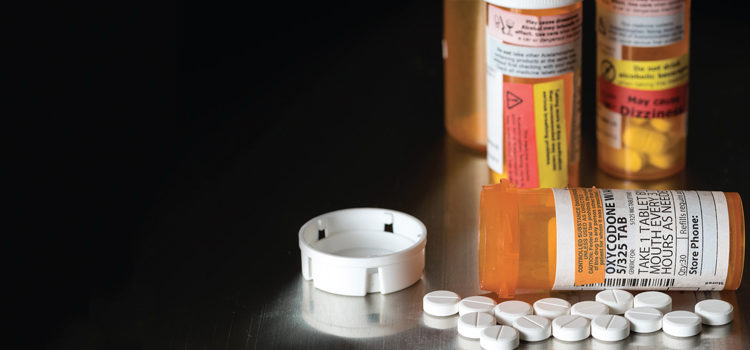
Dentists Should Write Fewer Opioid Prescriptions
Teenagers and young adults first introduction to opioids is often in the dentist’s office when they are prescribed painkillers to treat acute pain after oral surgery.
Teenagers and young adults first introduction to opioids is often in the dentist’s office when they are prescribed painkillers to treat acute pain after oral surgery. Because dental opioid prescriptions may be associated with subsequent opioid abuse in this patient population, dentists should consider alternatives to opioids for managing acute dental pain to help curb opioid misuse.
The joint study, “Association of Opioid Prescriptions From Dental Clinicians for US Adolescents and Young Adults With Subsequent Opioid Use and Abuse,” published in JAMA Internal Medicine, reports 30% of opioid prescriptions are written by dentists.
“Approximately 6% to 7% of adolescents and young adults who are exposed to opioids from dental providers may develop addiction/abuse. The bulk of these prescriptions likely come following third molar extractions,” reports Alan Schroeder, MD, a clinical professor of pediatrics at Stanford University School of Medicine and the study’s lead author. “We should try to avoid unnecessary opioids (and unnecessary procedures that drive opioids) in all age ranges, but particularly among this vulnerable age group.”
The retrospective cohort study analyzed the private health insurance claims of 754,002 patients age 16 to 25 years in 2015. Of these individuals, 29,791 received one or more opioid prescriptions written by a dentist. The median number of pills prescribed for third molar extractions was 20.
Among the 14,888 individuals in the index dental opioid cohort, 1,021 (6.9%) received another opioid prescription 90 to 365 days later, compared with 30 of 29,776 (0.1%) opioid-nonexposed controls. Of the 866 opioid-exposed individuals, 5.8% were diagnosed with opioid abuse.
“The overall findings are sobering, given how common these extractions are—but we were particularly surprised by the association between subsequent abuse and female sex,” notes Schroeder. Of the almost 15,000 study participants, white women were more likely to be diagnosed with opioid abuse. Women accounted for 52.9% of the opioid-exposed cohort.
Oral health professionals are taking their role in the opioid epidemic seriously. The American Dental Association (ADA) reports dentists have written nearly half a million fewer opioid prescriptions over a 5-year period, a drop from 18.5 million in 2012 to 18.1 million in 2017.
Data published in the April issue of The Journal of the American Dental Association shed light on opioid prescribing In dentistry, finding nonsteroidal anti-inflammatory drugs (NSAIDs) alone or in combination with acetaminophen are more effective for pain control than opioids. The findings align with a 2017 white paper published by the American Association of Oral and Maxillofacial Surgeons that encourages dentists to prescribe ibuprofen and/or acetaminophen instead of opioids to help manage postsurgical pain. The document, “Opioid Prescribing: Acute and Postoperative Pain Management,” advises that when prescribing opioids to manage acute and postsurgical pain clinicians begin with the lowest effective dose for the shortest duration possible, and also use their state’s prescription drug monitoring program.
The recommendations have been adopted by ADA in its opioid prescribing policy that supports consideration of the use of NSAIDs alone or in combination with acetaminophen as a first-line therapy over opioids. Prescribing fewer pills, and educating patients about the benefits and risks of prescription opioids are also part of the ADA’s recommendations to prevent opioid abuse.
But there’s more work to do to combat this epidemic. “I think that what has been missing from the discussion is the idea that we should also be focusing on potentially unnecessary procedures that drive opioid prescriptions,” says Schroeder. “Third molar extractions are the most common surgical procedure in older children and young adults, yet the evidence to support routine extractions is scant. I would like to see more focus on this aspect of the question, especially given there are other risks as well, including sedation/anesthesia, prophylactic antibiotics, and surgical complications.”

